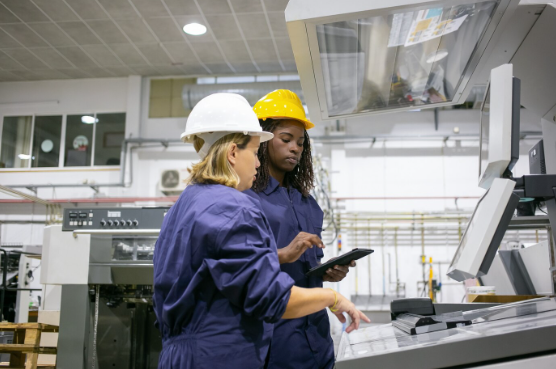In the intricate world of heat transfer paper manufacturing, quality control stands as a critical pillar ensuring that the final products meet stringent standards. The advent of machine learning (ML) technologies has revolutionized this domain, particularly in automating defect detection processes. This transformative approach not only enhances efficiency and accuracy but also significantly reduces the chances of defective products reaching the customer. This article delves into the integration of machine learning in quality control systems within the heat transfer paper manufacturing industry, underscoring its impact and potential.
Revolutionizing Defect Detection with Machine Learning
Machine learning, a subset of artificial intelligence (AI), enables systems to learn from data, identify patterns, and make decisions with minimal human intervention. In heat transfer paper manufacturing, ML algorithms are trained on vast datasets of images capturing both flawless and defective products. These algorithms learn to discern the minutiae of what constitutes a defect, such as irregularities in coating, color discrepancies, or textural inconsistencies. Once deployed, they can rapidly and accurately identify these defects in real-time during the manufacturing process.
Enhancing Quality Control Efficiency
The traditional methods of quality control, often reliant on human inspection, are inherently limited by human error and the practical constraints of speed and stamina. Machine learning, however, operates with unwavering precision around the clock. Its adoption in heat transfer paper manufacturing automates the detection of defects, substantially increasing the throughput of quality assurance processes. This not only ensures a consistently high-quality product but also allows human resources to be reallocated to more strategic tasks within the production line.
Reducing Waste and Increasing Sustainability
By pinpointing defects early in the manufacturing process, machine learning significantly reduces waste. Early detection prevents the further processing of flawed materials, saving on resources and energy that would otherwise be expended on defective products. This efficiency not only cuts costs for manufacturers but also aligns with the growing industry and consumer demand for more sustainable manufacturing practices.
Data-Driven Insights for Continuous Improvement
Machine learning systems do more than just identify defects; they collect data on every anomaly they detect. This treasure trove of information provides invaluable insights into the manufacturing process, identifying patterns and trends in defects that can inform process improvements. Over time, these insights can lead to refinements in manufacturing techniques, materials used, and even the design of the heat transfer paper itself, driving continuous improvement in quality and efficiency.
Challenges and Future Directions
The integration of machine learning into quality control is not without challenges. The initial setup requires a significant investment in technology and training data to develop accurate models. Additionally, the dynamic nature of manufacturing processes means that ML models must be regularly updated to adapt to new types of defects or changes in production methods.
However, the potential benefits far outweigh these challenges. The future of machine learning in heat transfer paper manufacturing looks promising, with ongoing advancements in AI and machine learning technologies poised to further enhance defect detection capabilities. As algorithms become more sophisticated and data more plentiful, we can expect even greater improvements in quality control processes.
Conclusion
Machine learning is setting a new standard in quality control for heat transfer paper manufacturing. By automating defect detection, it not only boosts efficiency and accuracy but also contributes to sustainability and continuous improvement. As technology evolves, the role of machine learning in ensuring the quality of heat transfer paper is expected to grow, marking a significant step forward in the pursuit of perfection in manufacturing.




